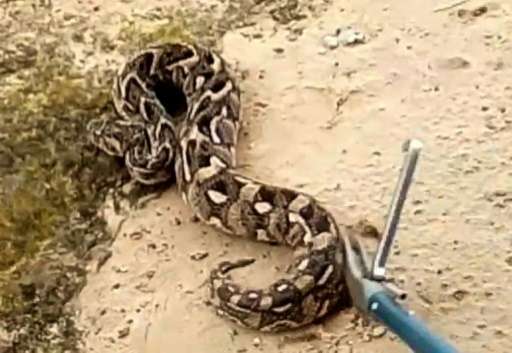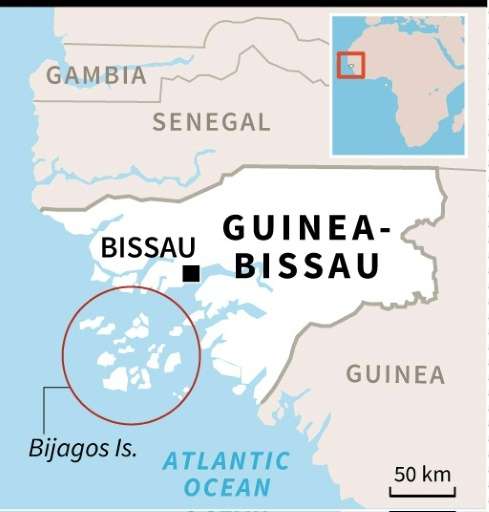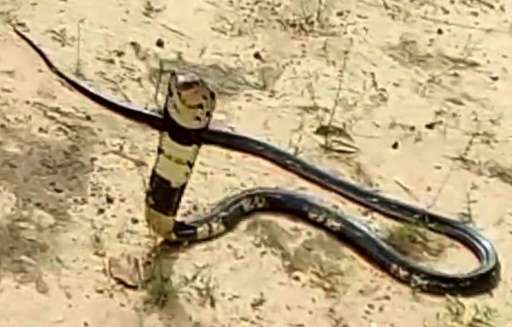Guinea-Bissau islands feel the bite of antivenom crisis

The vivid red wound at the base of Gina's ankle has remained open for three months and refuses to heal, leaving the Guinea-Bissau islander in constant pain.
"I thought it was from a piece of wood," she told AFP, recalling the day when a snake sunk its fangs into her leg.
"They had to carry me back home because I couldn't walk," she said, sitting in front of a thatched hut decorated with white sea shells.
Gina lives on Soga, a tiny speck of land that is one of the 88 islands of the Bijagos archipelago, an Atlantic paradise home to dolphins, tortoises—and forests full of deadly snakes.
Home to some 30,000 people, the islands are recognised by the UN's world heritage body (UNESCO) for their exceptionally diverse ecosystems, but there is one creature in particular that thrives among the mangroves.
"The Bijagos islands are reputed for their snakes. All the deadliest species live there, including mambas and cobras," says Aissata Regolla, a researcher at Guinea-Bissau's Institute for Bioversity and Protected Marine Areas (IBAP).
"On certain islands, our staff can't walk more than five minutes without seeing one."
Gina should perhaps count herself lucky. Every year around 125,000 people die after being bitten by a snake, 30,000 of them in sub-Saharan Africa. Many more are left with life-changing injuries or amputations.
But finding an antivenom which is affordable is becoming increasingly difficult, prompting a warning from the World Heath Organization last year.
"The price of some antivenoms has dramatically increased in the last 20 years, making treatment unaffordable for the majority of those who need it," the UN health agency said.

Long and complex process
On the continent, antivenom treatments are not generally cost-effective for the drug companies that make them.
In 2010, French pharmaceuticals giant Sanofi stopped producing its widely-used Fav-Afrique serum, which is effective against the venom of 10 different snake species, with the last batch expiring in June of this year.
Sanofi Pasteur, its vaccines division, said it had been edged out by cheaper competitors.
But several studies have shown these low-cost rivals are far less effective in treating bites, while the delicate process of cultivating an antivenom further complicates delivery.
"Antivenom is a biological product. You have to buy the venom, draw out the antibodies, purify them... it's an arduous and complex process," explains Jean-Philippe Chippaux, a snake bite expert at France's Institute of Research for Development (IRD).
"Governments, local authorities and companies should all make a contribution. Today no ministry is capable of saying where the problem lies, how many bites there are or where they took place."
Worst hit are children and farmers working the land.
Cacutu Avis earns his living cutting down trees in the forest between the coast and the village of Eticoba.
"The cacubas are the most deadly, generally if they bite you, you are a goner," he says, using the local word for mambas.

"They are often in the trees and palm leaves."
Reliance on healers
Soga is half an hour from the larger island of Bubaque, which has a basic hospital, and more than five hours from the capital, Bissau.
But with a single dose of life-saving antivenom costing up to $150 (141 euros)—often more than a month's salary—many are forced to turn to traditional healers.
"People have died in front of me at the healers' places, but others have survived," said Jose Nactum, director of the hospital in Bubaque.
"We don't have antivenoms adapted for different species and we have a lot of difficulty identifying the type of snake," he admits.
Antivenom must also be kept chilled in the fridge, yet only 10 percent of the country has access to electricity.
Even for the new players in the market, making the antidotes cost-effective is a huge challenge.
"Antivenoms don't bring in enough for the big pharma houses compared with other products," says Juan Silanes, president of Mexico's Inosan Biopharma, now Africa's top provider of snakebite serum.
"But if there is a product that's fairly good, and at a good price, that could change things," he adds.
© 2016 AFP

















